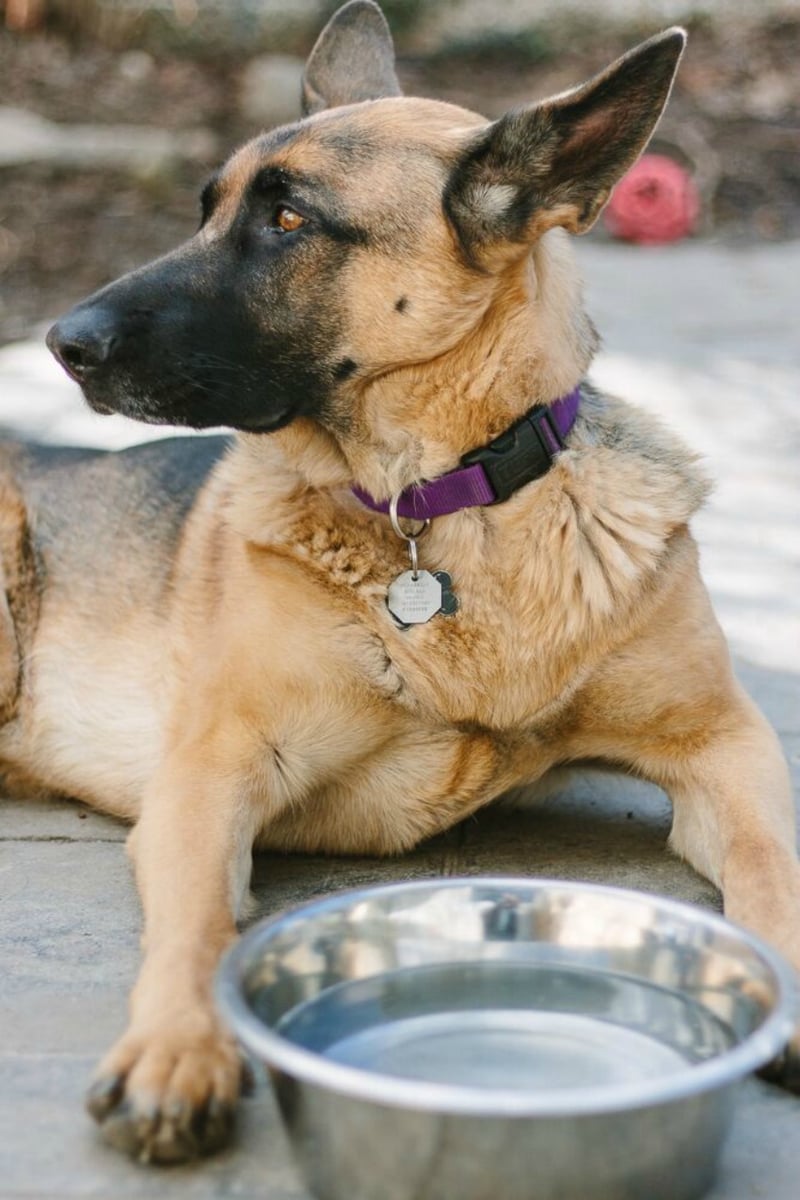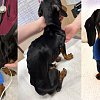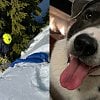How often are you cleaning your dog bowls? My guess is not often enough.
Most of us aren’t, don’t feel guilty. But if you ate food off the same plate every day or drank out of the same cup for weeks on end, you’d be pretty grossed out.
The truth is dog bowls are pretty nasty places.

A 2011 study by the National Sanitation Foundation ranked pets water bowls in the number four spot of the grubbiest, dirtiest spots in our homes.
First off, if you’re using plastic – get rid of it. Throw it out, repurpose it, do what you gotta do.
Plastic is a super porous material and makes a nice home for some gnarly bacteria. Using stainless steel or ceramic is a much safer option.
Yeast, mold, coliform bacteria (including Salmonella and E. coli) are all culprits that can be found in dog bowls.
I don’t think I need to tell you, that’s not good.

The most common slimy film you often find in dog bowls is called Serratia Marcescens and can lead to different infections like UTI’s and pneumonia.
Ideally, you should be washing your dog bowls every day and after every meal. Realistically, I know most of us aren’t.
But, you should try at least once a day, if not every other day, to get into the routine of hand washing bowls with hot soapy water like you would your other dishes.
Make sure you designate a sponge for dog bowls only! And, at the very least, run everything through the dishwasher once a week!

A great product to invest in is the CU Bowls! They are antimicrobial and have been shown to greatly decrease the presence of bacteria in water bowls.
They are a Canadian company started by UBC alum!
Products are only available for purchase through their website.
These are meant for water only, but at least that’s half the battle!

If you feed your dog kibble, storage containers also fall under the category of things you are probably not cleaning often enough.
The fats and oils present in kibble begin to oxidize in storage bins (especially plastic ones), essentially causing mold to start forming.
Then, you pour a fresh batch into the already rancid food over and over without washing the bin.
Switching to a glass or metal bin is a good option or, better yet, keep your kibble in it’s bag and put the full bag into the bin.
Washing your storage container out periodically with hot soapy water will also help avoid issues down the road.

Don’t forget to check us out on Facebook and Instagram @okpetproject, and, as always, you can read more articles like this on our websitewww.okpetproject.com.

















